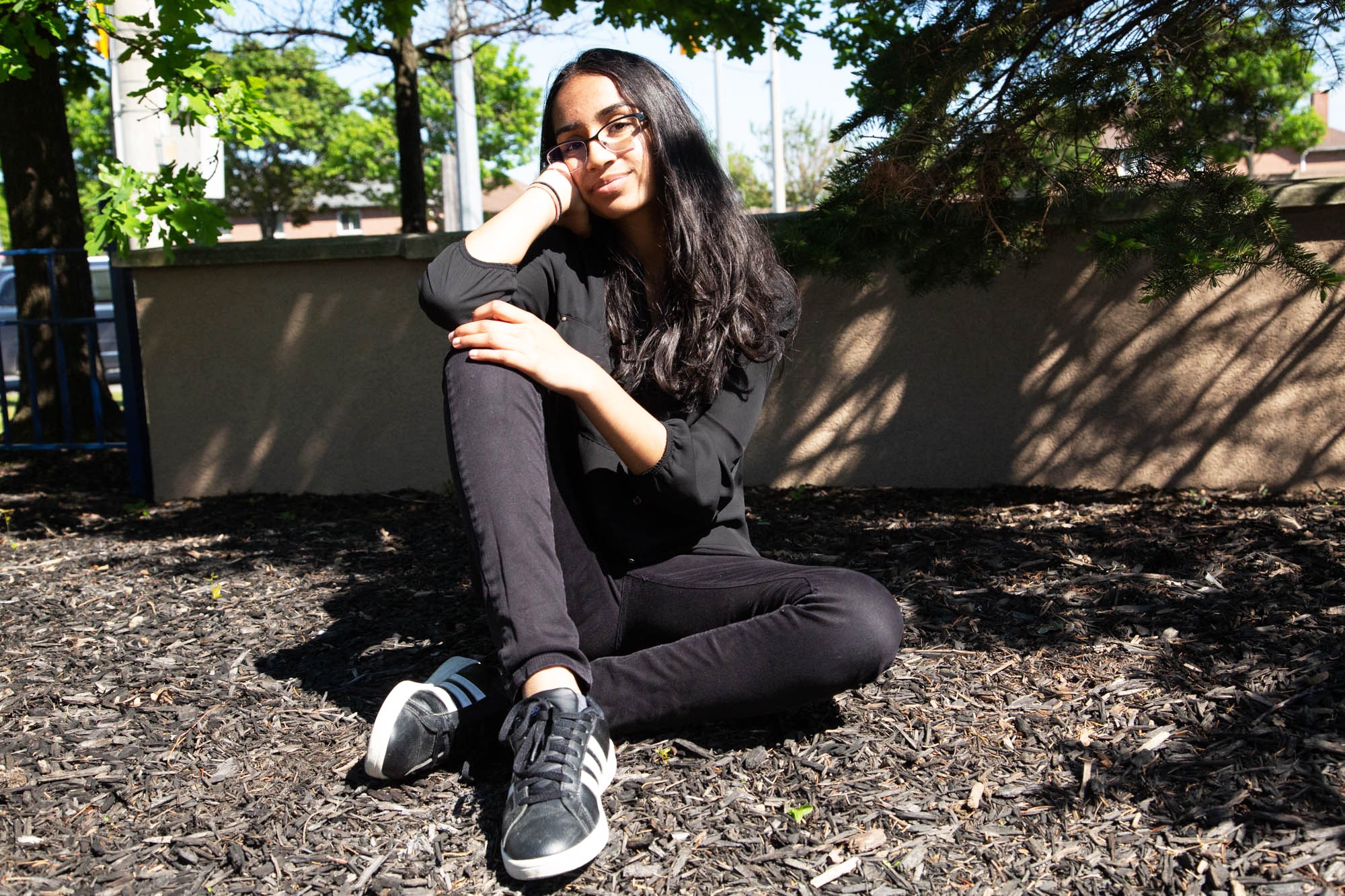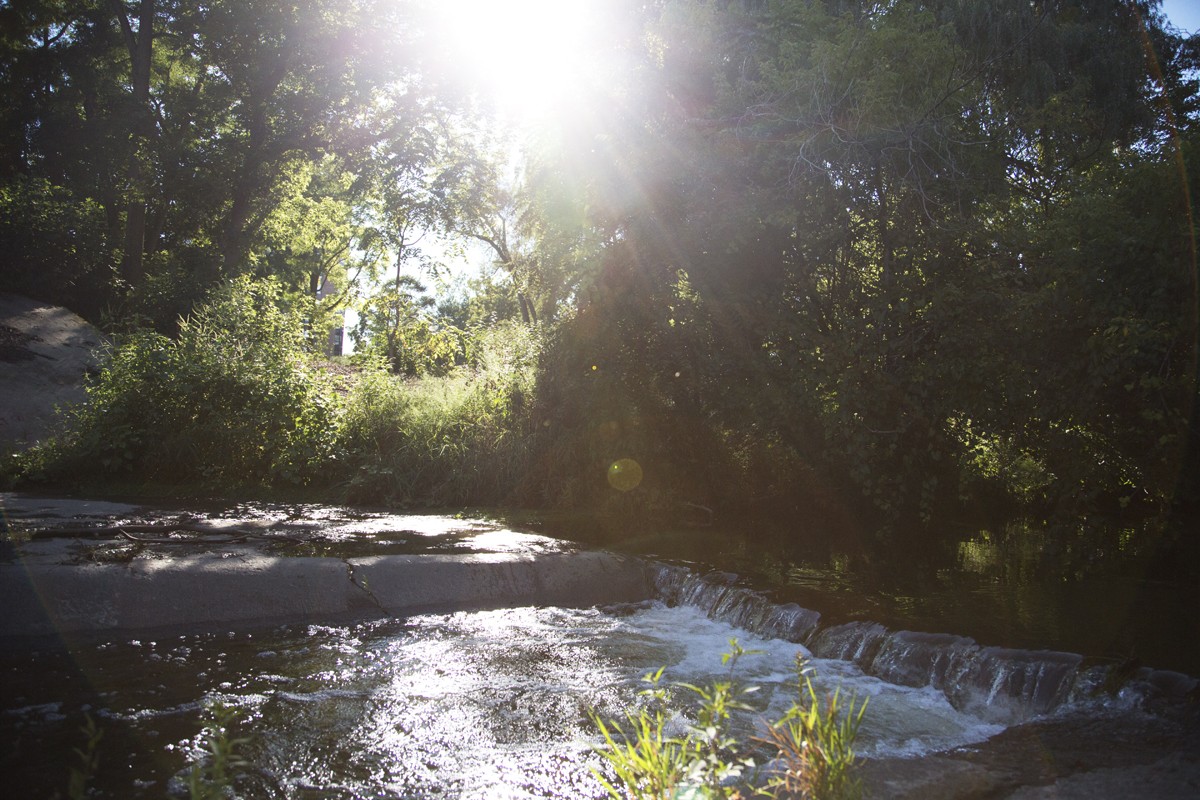
High school student leads charge against climate change in Brampton
An emaciated polar bear flashed on the big screen as Shailly Prajapati stared down Brampton councillors and spoke about the existential challenge they — and the rest of us — face.
“The truth is, the rise of global temperatures is only the result of our own actions and activities. Every day we continue to add on to the already excessive amount of greenhouse gases that are present in the atmosphere,” the 15-year-old said, pleading with council at their June 5 meeting to commit Brampton to taking action against climate change.
“In fact, Canada itself contributes greatly to this issue. Canada accounts for about 2 percent of all annual greenhouse gas emissions worldwide. Which may seem like a very small amount, but 2 percent of a number as large as 38.2 billion tonnes can be quite alarming (about 764 million tonnes). Especially when taking into consideration that Canada’s population only accounts for about 0.5 percent of the global population… at the rate we are pumping out these greenhouse gases and exploiting natural resources, it would take about five Earths to support ourselves.”
The maturity of those words reflects Prajapati’s small part in a global youth movement inspired in part by a Swedish high school student. Greta Thunberg was Prajapati’s age last August when she skipped school and sat on the steps of the Riksdag, Sweden’s national parliament, to demand her country fall in line with targets set out by the Paris Agreement. She continued her vigil for three weeks straight, and in November, the “school strike for climate” was born as she garnered increasing attention in the world’s media. Since then, Thunberg has become an outspoken advocate for climate change mitigation and a symbol of the movement’s unofficial youth wing.

Brampton's Shailly Prajapati
Prajapati’s ultimate ambition is to go into medicine, but she has taken on the mantle of environmentalist during her time at Harold M. Braithwaite Secondary School. Ultimately, her words last week persuaded councillors to vote unanimously to declare a climate emergency in Brampton — a mainly symbolic move, but one that promises to undergird a variety of environmentally friendly decisions.
Coincidentally, Prajapati’s journey started when she attended a city event, the Brampton 2040 Vision Youth Symposium. "It was like a workshop-style event … . We were assigned certain visions, or we would pick whatever vision we wanted to work on. Mine was sustainability and the environment,” she told The Pointer at a Starbucks in Trinity Commons.
She immediately became part of an initiative to plant one million trees in Brampton, one of the goals laid out in the Brampton 2040 Vision. The document, also known as Living the Mosaic, lays out an aspirational path for future development in the city, which includes reimagining transportation, housing, the arts and green spaces in the city. The brainchild of Vancouver-based urban planner Larry Beasley, the vision, if implemented, would include creating “complete streets” — a planning concept in which urban streetscapes provide safe space for walking, cycling and public transit as well as cars, with priority given to a “pedestrian first” philosophy.
As Prajapati mentioned, included in the 2040 Vision’s plan for a green Brampton is the Brampton Trees Project, a goal to plant one million trees across the city. The program has some overlap with the vision’s goal to create a Brampton Eco-Park, a network of greenspaces in the city. The ultimate aim of the tree planting program is to create an urban forest and canopy in the urban jungle. Trees pull carbon dioxide, one of the primary greenhouse gases, out of the atmosphere, while cooling temperatures in urban environments.
“There is something called a tree priority planting index in Brampton, and it basically shows what areas have the highest tree planting potential. So that might include actual soil conditions, how many trees are already there at the moment — so we may need to plant more. We would target areas ... like wards 3, 6, 9 and 10. We were thinking of targeting all the wards, [but] those are the ones with the highest tree planting potential,” she told The Pointer.

Peel Region has designated areas of priority for tree planting as well. A document titled Priority tree planting areas to grow Peel’s urban forest designates about two-thirds of the city as being a high priority for tree planting — nearly all of that land being west of Tobram Road. Almost all of Mississauga is deemed to be in need of trees. The Caledon community of Bolton is the only pocket designated north of Mayfield Road for more planting.
Prajapati, with help from the City of Brampton and student colleagues she met at the symposium, would like to mobilize 132 schools in Brampton for a tree planting month this September.
Teenagers, foreseeing the struggles their generation will face because of damage done by older generations, have become among the most potent and ardent advocates for immediate action against climate change on the local and global level. “When your house is on fire, and you need to keep your house from burning to the ground, then that does require some level of panic. We are in the midst of the sixth mass extinction, and the extinction rate is up to 10,000 times faster than what is considered normal,” Thunberg said in an emotional speech in the European Union’s parliament. “Our house is falling apart and our leaders need to start acting accordingly.”
While Thunberg focuses her frustration towards the leaders of the world, Brampton’s also appear sometimes to miss the point. Earlier at the same meeting where Prajapati’s appeal pushed them to declare a climate change emergency, they voted to support the province’s plan to reopen the environmental assessment for the proposed GTA West Corridor highway.
The highway would stretch from the 401 through Brampton, connecting with Highway 400 while skirting the Greenbelt. The project has been touted as a solution to road congestion, even though studies show that supply encourages new demand and new highways inevitably become gridlocked within three to five years, in turn adding to greenhouse gas emissions.
Much of the land along the proposed route of the highway has already been bought up by developers, which will bring pressure to turn land along the corridor into a sea of sprawl. Councillor Rowena Santos, who not only introduced the motion to declare a climate emergency but also invited Prajapati to speak, supported Councillor Michael Palleschi’s motion to support the EA.
Prajapati’s words came as a timely reminder that such choices have consequences.
“It’s time we made changes to our lifestyles for the betterment of our planet,” she said. ”And finally, it’s time we stopped thinking that a seemingly small city on our huge planet cannot make a change.”
Email: [email protected]
Twitter: @mansoortanweer
Submit a correction about this story


